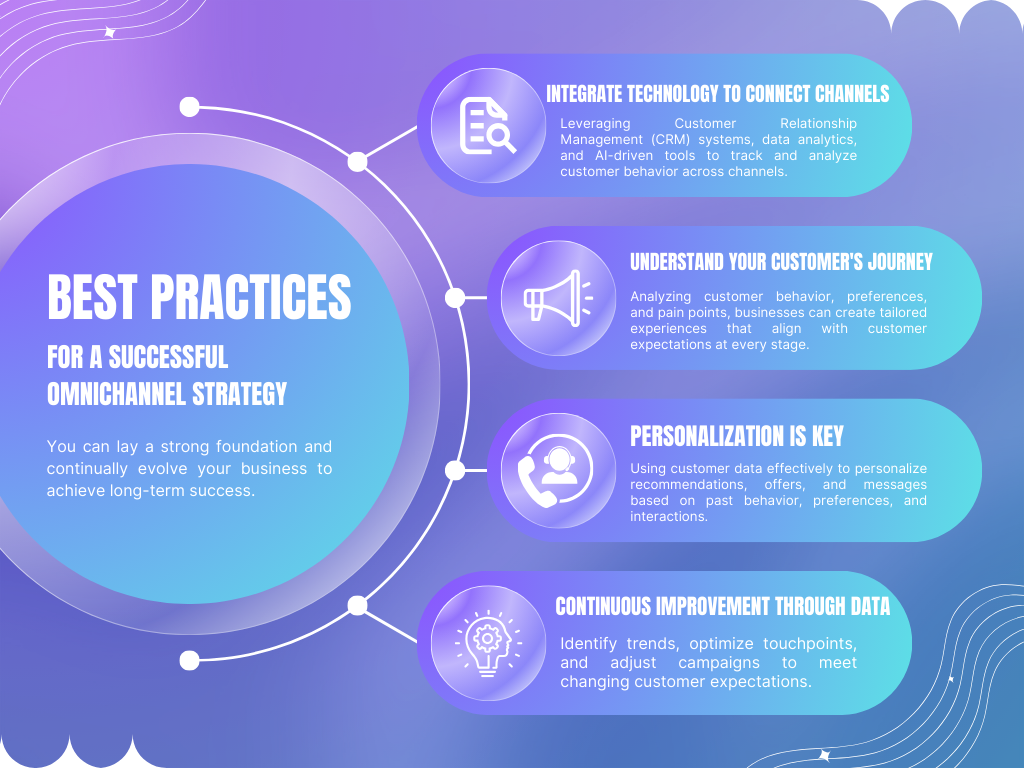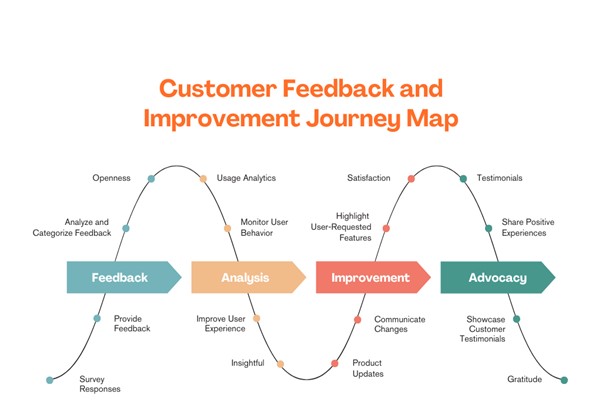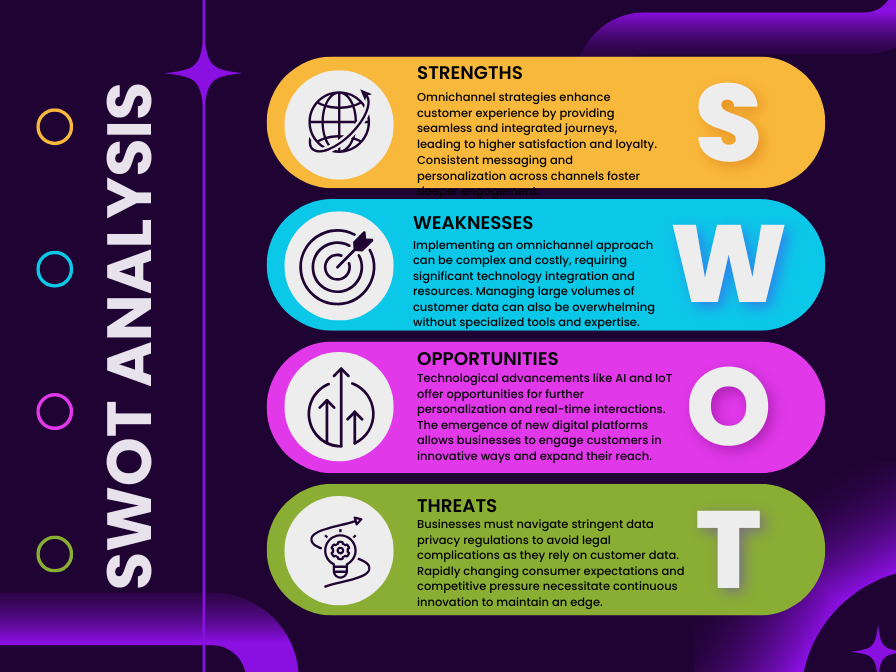Creating an exceptionally excellent and seamless omnichannel strategy is imperative for a business to provide an integrated and unified customer experience. In the digitally-driven world, it becomes all the more important to provide consistency across all touchpoints so that a customer can connect with the brand across platforms. Implementing a unified omnichannel strategy is the cornerstone of creating personalized customer journeys.
In this article, we will explore the best practices for delivering seamless customer journeys through a sure-shot omnichannel strategy. What are the best practices for developing such a strategy? Explore with us as we unfold the 5 best practices to help organizations enhance CX through heightened satisfaction, customer loyalty, and increased revenue.
Importance of Omnichannel Strategy
A successful strategy provides a cohesive and unified experience across channels, which include social media, mobile platforms, and in-store, among others. While a multichannel strategy focuses on treating each channel as a separate unit, an omnichannel strategy ensures that each interaction, irrespective of the platform, is integrated into a unified customer journey.
For instance, when a customer browses products online and engages with a brand on social media, then they generally complete the purchase in-store. To ensure this continuity in the customer journey, a strong omnichannel strategy is required. This is essential not only for enhancing customer satisfaction but also to strengthen customer loyalty towards a brand.
Best Practices that Build Strong Omnichannel Strategy
Best practices serve as a roadmap for navigating the complexities of delivering seamless, personalized, and consistent experiences across multiple touchpoints. Without a solid framework in place, companies risk offering disjointed interactions that frustrate customers and undermine brand loyalty. Adopting proven methods helps businesses leverage technology effectively, ensuring they can respond to customer needs in real-time while maintaining a unified brand presence across all platforms.

1. Understand Your Customer's Journey
The foundation of any successful omnichannel strategy is a deep understanding of your customer’s journey. This means mapping out all the touchpoints your customers interact with across various channels. By analyzing customer behavior, preferences, and pain points, businesses can create tailored experiences that align with customer expectations at every stage.
2. Integrate Technology to Connect Channels
To achieve a seamless omnichannel roadmap, companies must integrate technology that connects all customer interactions. This includes leveraging Customer Relationship Management (CRM) systems, data analytics, and AI-driven tools to track and analyze customer behavior across channels. Technology integration ensures that all teams, from marketing to customer service, have access to real-time data, enabling them to provide a personalized experience.
3. Personalization as a Strategic Imperative
Customers expect brands to recognize them across platforms and proactively meet their needs. Leveraging advanced technologies like AI-powered recommendation engines, machine learning algorithms, and customer data platforms (CDPs), businesses can deliver hyper-targeted recommendations, offers, and communications based on detailed insights from customer behavior, preferences, and historical interactions. These tools enable real-time personalization at scale, enhancing customer engagement and significantly increasing conversion rates, driving measurable business outcomes.
4. Deliver Consistent, Unified Experiences Across All Touchpoints
Whether customers engage through social media, mobile applications, or physical locations, their experience should be seamless, cohesive, and reflective of your brand’s core values. Technologies such as cloud-based CRM systems, headless CMS platforms, and API-driven integration tools enable a unified digital infrastructure, ensuring that each interaction—regardless of the platform—delivers the same high-quality service and brand consistency. This coherence, powered by advanced IT solutions, reinforces trust and loyalty, key elements in maintaining a competitive edge in today’s tech-driven marketplace.
5. Leverage Data for Continuous Improvement
A robust omnichannel strategy should be data-driven. By continuously gathering and analyzing customer data, businesses can improve their strategies over time. This data-driven approach allows companies to identify trends, optimize touchpoints, and adjust campaigns to meet changing customer expectations. Regular feedback and insights ensure that your omnichannel strategy stays relevant and effective.
How Valuebound Empowers Businesses with Omnichannel Strategies

At Valuebound, we believe in the intersection of technology with a touch of human empathy to ensure that businesses remain ahead of the game. Our team of experts excel at building strong and transformative omnichannel experiences that can cater to the modern demands of customers. To ensure seamless interaction, Valuebound helps businesses implement an effective omnichannel strategy. We help businesses leverage cutting-edge technology to streamline operations, enhance customer journeys, and foster lasting connections.
Through Valuebound’s omnichannel solutions, businesses get consistent, personalized, and data-driven experience across every customer touchpoint. Our consistent feedback of customer journey through analysis helps in improvement, and advocacy.
We also provide SWOT analysis for the organizations willing to take a step towards their omnichannel strategy and delivering exceptional customer experience.

Valuebound provides a SWOT analysis to facilitate a concise evaluation of omnichannel roadmap for businesses, focusing on their potential and challenges to deliver seamless customer journeys.
Use Cases of Successful Omnichannel Strategies
Many brands have successfully implemented omnichannel strategies that have transformed their customer journeys. Retail giant, Starbucks is a classic example of how strong omnichannel plan can elevate the customer experience.
Starbucks’ mobile app allows its customers to pre-order, earn rewards, and enjoy personalized offers- all while maintaining a consistent brand experience across channels- online or offline.
Another example is Sephora, the beauty brand that has mastered its omnichannel strategy by integrating online and in-store experiences. Customers using brand’s mobile app can browse through the products, access tutorials, and receive personalized recommendations. The seamless communication with a customer resulted in Sephora’s increased sales, and most importantly, higher brand loyalty.
Omnichannel Strategy: The Future Trends
As technology continues to evolve, omnichannel strategies will become even more sophisticated. With advancements in AI, machine learning, and IoT, businesses can anticipate customer needs with greater accuracy and offer hyper-personalized experiences. Voice commerce, AR-driven shopping experiences, and connected devices are set to play a key role in shaping the future of omnichannel strategies.
Companies that invest in the right technology and prioritize customer-centric approaches will be able to stay ahead of the competition and meet the growing demands for seamless customer experiences.
Ready to elevate your business with a powerful omnichannel strategy? Let Valuebound help you create seamless customer journeys that drive growth.
FAQs
1. What is an omnichannel strategy?
An omnichannel strategy is a customer engagement approach that ensures consistent and integrated experiences across all customer touchpoints.
2. How does an omnichannel strategy benefit businesses?
An effective omnichannel strategy boosts customer satisfaction, loyalty, and revenue by creating seamless interactions across multiple channels.
3. How do you implement an omnichannel strategy?
Implementing an omnichannel strategy involves understanding customer journeys, integrating technology, ensuring consistency, and personalizing experiences.
4. What tools are essential for omnichannel strategy?
CRM systems, data analytics, and AI-driven tools are critical for managing and optimizing an omnichannel strategy.
5. How can Valuebound help with omnichannel strategies?
Valuebound empowers businesses to deliver seamless omnichannel strategies through innovative technology solutions and customer-centric approaches.




